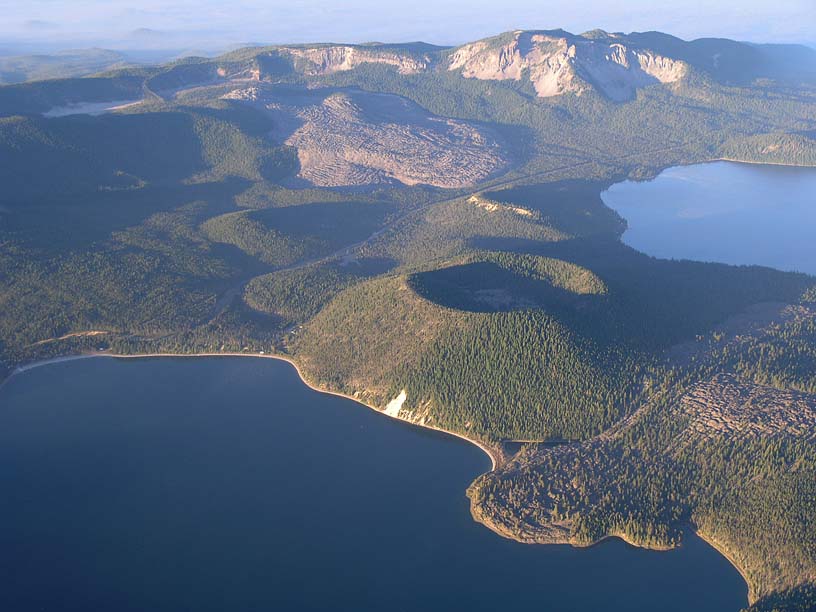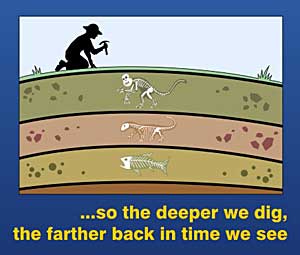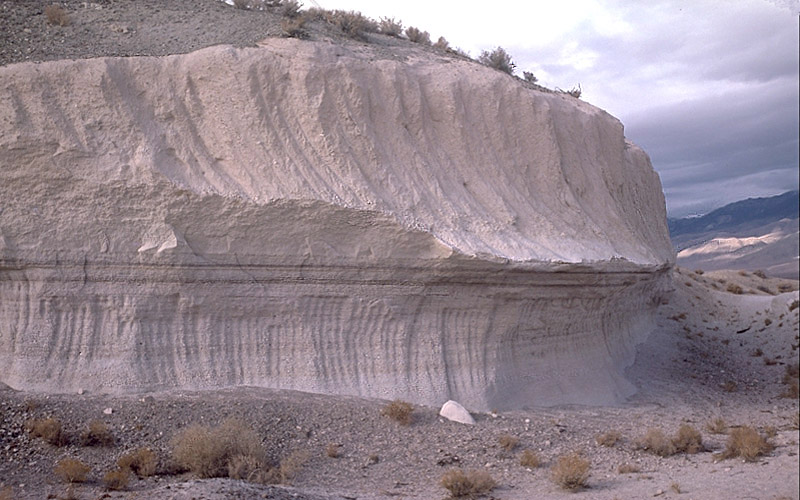Pages 56-67
Return to History 8 Archaeology Bone From a Dry Sea
Contents
Bone From a Dry Sea [1] pages 56-67 and Manual[2] page 6
By: Courtney Jacobs
Summary of This Chapter in BDFS[1]
Dr. Hamiska, his wife, Jane, Vinny, and her dad visit an archaeological site int he badlands where previous excavations had taken place in the past. According to the archeologists who had dug before them, there were no fossils left. They were visiting anyway because the rock formations may have a layer associated with another fossil they found. Soon, Ms. Hamiska proves the previous archaeologists wrong by finding a tooth dated at around 4 million years. Later, they find more fossils plus more of the layer they were looking for. Everyone gets very excited when Vinny finds a flat-looking fossil by herself. When they discover what it is (a human-like foot), everyone cheers. Dr. Hamiska tells Vinny that she found one of the oldest hominid specimens that exists. Turns out Vinny did bring everyone luck!
Place changes - BFDS[1] Pages 56 and 57

This picture shows a boat that used to be sunk in the sea, but when the sea dried up, the boat remained on the ground.
Pages 56 and 57 - “When the plain which you saw from the camp had been sea, and the hills where the camp was had been an island, this had been the channel between the island and the mainland. Then, slowly, the land had risen, and it had become a great marsh, and creatures had lived and died there, leaving their bones in the marsh. Rivers had fed the marsh, bringing down silt from the hills, layer after layer after layer, covering the bones. Then the coastline had risen, cutting the marsh off from the sea, and slowly it had dried out, evaporated, becoming saltier and saltier as it did so. It was badlands still because of the salt. The plates of the earth had ground against each other and there had been earthquakes, tilting the edges of the plain into new young hills, where the layers of silt compacted into clay and fresh soft rock, while the buried bones became fossils within them. Time had streamed by, hundreds and thousands of seasons, wet, dry, wet, dry, wet, dry, each wet softening the surface of the earth and each dry baking it hard -again. Sometimes rain washed whole mountainsides away. Sometimes things barely changed at all."
Dr. Hamiska explains place change in the badlands which they are driving through. He tells everyone about how the dry, arid badlands used to be a salty sea, but then the place changed.

This picture shows a caldera, something that happens after an explosive eruption. The top of the volcano caved in. The place changed because that caldera could turn into a lake and provide a home for animals and plants.
Superposition - BFDS[1] Page 57, 58, 61, and 67, and Manual[2] Page 6
Page 57 - "…Rivers had fed the marsh, bringing down silt from the hills, layer after layer after layer, covering the bones..."
This describes layers of silt that can be dated using the law of superposition.
Page 58 - "Where the old strata are exposed, they lie in the same order as that in which they were laid down…"
Dr. Hamiska is explaining the law of superposition to VInny.
Page 61 - "You see this layering, how it's tilted?...So we had a minor volcanic eruption followed by a dry spell...I shall know where it comes in the sequence..."
They are using the law of superposition to date the rocks and identify what type of material the rocks are made out of.
Page 67 - "It's going to be datable by the tuff!"
This explains the law of superposition because you can date rocks relatively. If you know the exact dates of two layers surrounding a middle layer, you can predict that the middle layer formed in between those dates.
Page 6 - "What is the theory of superposition? Charles Lyell, the Father of modern geology, sensed that rocks formed layers like those of a cake. …the theory of superposition … states simply that a layer of rock at the earth's surface was deposited later than the layer under it… Lower is older."
This provides a concise definition of the law of superposition as set forth by Charles Lyell in the manual.

This picture depicts a simple way to understand the law of superposition.

This picture shows a real-life example of how scientists use the law of superposition to identify and date rock layers.
Bone From a Dry Sea pages 56-67[1]
By: Keshav Krishnan
Fossilization
Define tuff
Tuff is also known as "volcanic tuff"
Tuff is defined as a rock (usually stratified) composed of volcanic particles similar to ash and cinder.
